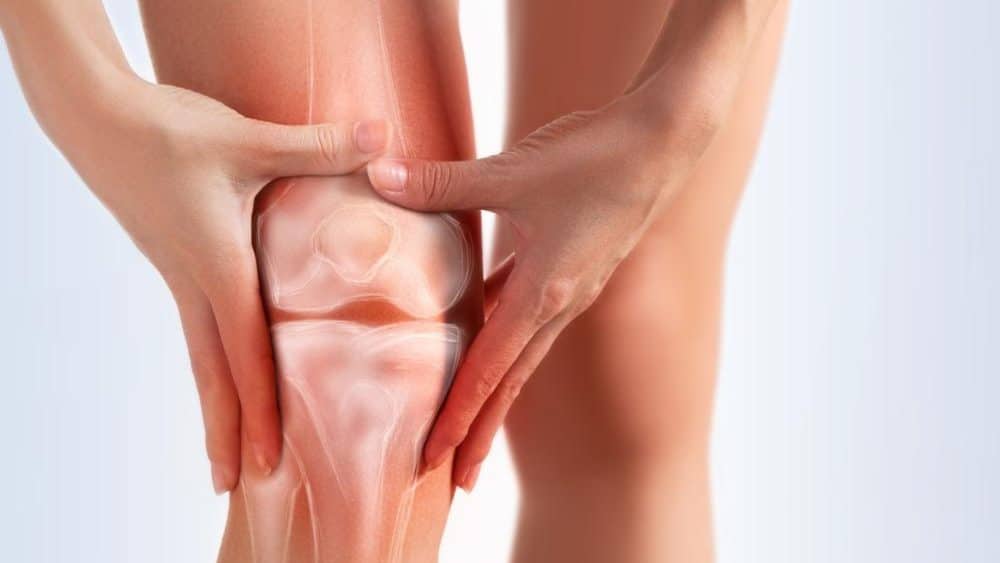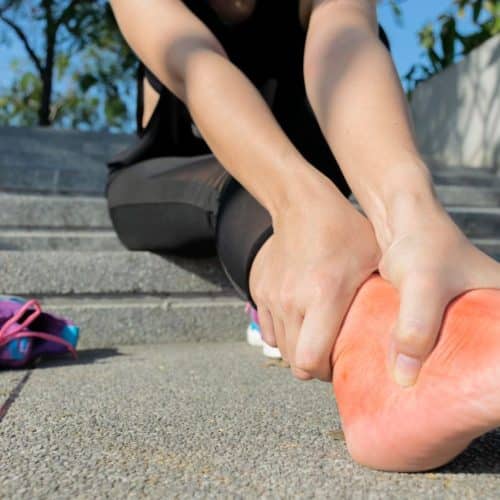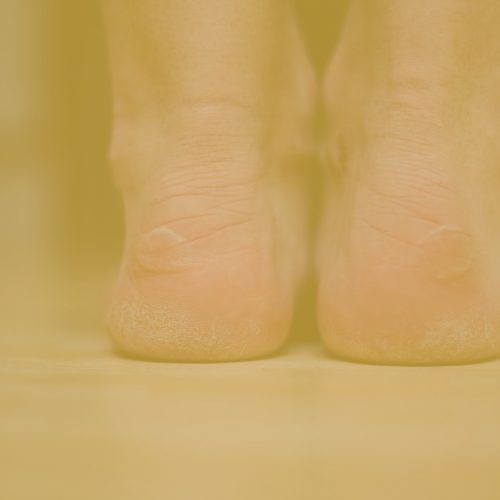Have you ever wondered if those extra pounds around your waistline could contribute to your knee discomfort? As we delve into this intriguing topic, we’ll uncover the surprising link between obesity and knee pain. Brace yourself for insights that could change how you view your body and its impact on your joints.
In short, yes, obesity can indeed cause knee pain. When excess weight places a burden on the knees, it leads to increased stress on the joint tissues. This, coupled with the production of inflammatory substances by fat cells, creates an unfavourable environment for your knees. As we explore the science behind this connection, you’ll gain a deeper understanding of how your weight management journey plays a crucial role in maintaining your joint health.
But fret not—there’s hope on the horizon. Discovering effective ways to manage your weight can alleviate the strain on your knees and potentially reduce pain. However, this isn’t just about shedding pounds; it’s about reclaiming your mobility and comfort. So, are you ready to embark on a transformative journey toward healthier knees? Let’s dive into the full article and unlock the secrets to a pain-free life.
Understanding Knee Pain
Knee pain is a complex and often debilitating condition that can significantly impact an individual’s daily life. The knee joint is one of the most intricate and crucial joints, supporting body weight, enabling movement, and maintaining stability. When this joint experiences discomfort or pain, it can severely limit a person’s mobility and overall quality of life.
1. Causes of Knee Pain
Knee pain can arise from many factors, from acute injuries to chronic conditions. Common causes include:
- Injuries: Traumatic events like falls, sports-related injuries, or accidents can result in immediate knee pain. Ligament tears, meniscus injuries, and fractures are common in such cases.
- Osteoarthritis: This degenerative joint disease is a leading cause of knee pain, especially in older adults. Osteoarthritis occurs when the protective cartilage that cushions the ends of bones wears down over time, causing pain, swelling, and reduced mobility.
- Rheumatoid Arthritis: An autoimmune disorder, rheumatoid arthritis can cause inflammation and pain in multiple joints, including the knees. It often leads to joint damage if left untreated.
- Tendinitis: Inflammation of the tendons around the knee joint can cause localised pain and discomfort.
- Bursitis: Bursae are small fluid-filled sacs that cushion the knee joint. Inflammation of these sacs can lead to pain and swelling.
- Overuse: Repetitive activities that strain the knee joint, such as running or squatting, can lead to overuse injuries and subsequent pain.
- Obesity: As explored in this article, excess body weight can place significant stress on the knee joint, contributing to pain and deterioration.
2. Types of Knee Pain
Knee pain can manifest in various ways, depending on the underlying cause. Some common types of knee pain include:
- Localised Pain: Pain concentrated in a specific area of the knee, often indicative of an injury or inflammation in that region.
- Dull Ache: A persistent, low-level ache caused by conditions like osteoarthritis.
- Sharp Pain: Sudden and intense pain that might result from ligament or meniscus tears.
- Pain with Movement: Pain that worsens during movement, such as bending or straightening the knee, which is often associated with mechanical issues in the joint.
- Swelling: Inflammation can lead to visible swelling around the knee joint, accompanied by pain.
- Stiffness: Difficulty fully extending or bending the knee due to pain and tightness in the joint.
3. Impact of Knee Pain
The impact of knee pain extends beyond physical discomfort. It can affect an individual’s mental and emotional well-being as well. The constant pain and limitation in movement can lead to frustration, anxiety, and even depression. Once enjoyable activities become challenging, leading to a decreased quality of life. Additionally, the inability to engage in physical activities can further contribute to weight gain, exacerbating obesity-related knee pain.
The Link Between Obesity and Knee Pain
Excess body weight and knee pain share an intricate and closely intertwined relationship. Scientific research has consistently demonstrated a notable link between obesity and an increased likelihood of experiencing knee pain. This connection is a matter of correlation and is deeply rooted in the physiological impact of carrying excess pounds.
When the body bears excess weight, particularly around the midsection, the knees face elevated stress during daily activities. This heightened pressure can lead to accelerated wear and tear on the knee joint, resulting in discomfort and pain over time. Furthermore, obesity is often accompanied by chronic low-grade inflammation throughout the body. This systemic inflammation can affect joint health, as inflamed tissues contribute to cartilage degradation. This protective cushion covers the ends of bones in the joint.
A crucial factor contributing to the link between obesity and knee pain is the release of adipokines—bioactive substances produced by fat cells. These adipokines play a pivotal role in triggering inflammation within the body. As more adipokines are released due to excess fat, the inflammatory response can negatively affect joint tissues, hastening the breakdown of cartilage and exacerbating pain.
The mechanical strain and inflammatory processes further contribute to the development of osteoarthritis—a degenerative joint disease characterised by the deterioration of cartilage. Obesity increases the risk of osteoarthritis in weight-bearing joints such as the knees. As cartilage deteriorates, bones may rub against each other, leading to friction and pain.
The increased fat mass can also alter an individual’s gait and biomechanics. These changes can lead to uneven weight distribution across the joints, causing further stress on specific areas and intensifying discomfort. As obesity persists, the cycle of joint stress, inflammation, and pain continues, significantly burdening an individual’s mobility and overall well-being.
The link between obesity and knee pain is complex and multifaceted. The excess weight strains the knee joints, leading to mechanical stress and inflammation. These factors synergistically contribute to the breakdown of joint tissues, aggravating pain and potentially leading to conditions like osteoarthritis. Recognising this connection underscores the importance of weight management as a fundamental aspect of joint health and pain reduction.
Mechanisms Behind the Connection
The intricate connection between obesity and knee pain can be elucidated by delving into the underlying mechanisms that drive this relationship. The interplay of physiological processes and structural dynamics sheds light on why excess body weight can lead to discomfort and pain in the knee joints.
- Adipokines and Inflammation: The role of adipokines—molecules secreted by fat cells are central to the connection. Adipokines are not solely responsible for storing energy; they also act as signalling molecules. In obesity, fat cells release higher amounts of these molecules, leading to chronic low-grade inflammation. This inflammation not only affects the entire body but also impacts joint health. As adipokines circulate in the bloodstream, they can trigger inflammation in joint tissues, contributing to their degradation over time. This process further compounds knee pain as inflamed tissues lose their ability to function optimally.
- Cartilage Breakdown: The protective cushioning of the knee joint, known as cartilage, plays a crucial role in maintaining smooth movement. However, the excess weight borne by the joint can accelerate the breakdown of cartilage. The inflammatory environment induced by obesity disrupts the delicate balance between cartilage synthesis and degradation. The result is an accelerated degradation process, where cartilage is broken down faster than it can be repaired. This cartilage erosion exposes bones, causing friction and discomfort in the knee joint.
- Mechanical Stress: The sheer weight carried by the body in the case of obesity imposes significant mechanical stress on the knee joints. The knees are designed to support the body’s weight within a healthy range. However, excess pounds alter the biomechanics of movement. The weight distribution across the joint becomes uneven, leading to concentrated stress on specific areas. This uneven loading contributes to the wear and tear of joint tissues, causing pain and discomfort. The altered biomechanics can also lead to malalignment, exacerbating the strain on the joint structures.
- Inflammatory Feedback Loop: The inflammatory environment created by obesity fosters a self-perpetuating cycle. Inflammation triggers cytokine release—proteins mediating cell communication—further amplifying the inflammatory response. This loop of inflammation perpetuates the degradation of joint tissues, particularly cartilage. As cartilage deteriorates, the bones’ natural cushioning diminishes, resulting in pain and reduced joint function.
- Metabolic Factors: The metabolic changes associated with obesity can also impact joint health. Insulin resistance, commonly observed in obesity, can negatively affect cartilage production and contribute to its degradation. Furthermore, metabolic dysregulation can alter the composition of synovial fluid—the lubricating fluid in joints—compromising its ability to provide adequate cushioning.
The mechanisms underlying the connection between obesity and knee pain revolve around inflammation, cartilage breakdown, altered biomechanics, and metabolic disturbances. These factors synergistically create an environment conducive to joint deterioration and discomfort. Recognising these intricacies underscores the importance of addressing obesity for overall health, preserving joint function, and alleviating knee pain.
Impact on Joint Health
The impact of obesity on joint health, particularly in the context of the knee joint, cannot be understated. Excess body weight places immense stress on the joints, leading to a cascade of effects that significantly compromise their function and overall well-being.
- Cartilage Degradation: One of the primary consequences of obesity-related joint stress is accelerated cartilage degradation. This essential cushioning material covers the ends of bones in the joint. The excess pressure and mechanical strain imposed on the joint by the surplus weight initiate a breakdown of cartilage integrity. As cartilage deteriorates, the bones lose their protective layer, resulting in bone-on-bone contact during movement. This friction causes pain, inflammation, and a reduction in joint mobility.
- Inflammation: The link between obesity and inflammation is critical in understanding its impact on joint health. Adipose tissue releases inflammatory molecules called adipokines, which trigger a chronic inflammatory state throughout the body. This inflammation infiltrates joint tissues, further contributing to the degradation of cartilage and the development of conditions like osteoarthritis. The constant inflammation perpetuates joint pain and hinders their ability to function optimally.
- Osteoarthritis Progression: Obesity is a significant risk factor for the development and progression of osteoarthritis—a degenerative joint disease characterised by the breakdown of cartilage. The increased stress on the knee joints in obese individuals accelerates the wear and tear of cartilage, leading to more rapid disease progression. As osteoarthritis advances, joint pain intensifies, mobility diminishes, and the overall quality of life declines.
- Joint Misalignment: The excess weight carried by the body can alter joint mechanics, leading to joint misalignment. This misalignment stresses specific joint parts, causing uneven wear and further accelerating cartilage degradation. Pain and discomfort increase as the joint loses its natural alignment, and the risk of injury rises.
- Limited Mobility: The combined effects of inflammation, cartilage breakdown, and joint misalignment contribute to limited joint mobility. Obese individuals often experience reduced range of motion, making it difficult to perform daily activities and engage in physical exercise. The diminished ability to move freely can lead to a sedentary lifestyle, exacerbating the cycle of weight gain and joint pain.
- Psychosocial Impact: Beyond the physical effects, the impact of obesity-related joint issues extends to psychological and emotional well-being. Chronic pain and limited mobility can lead to frustration, anxiety, and depression. The inability to participate in once enjoyable activities can significantly impact an individual’s self-esteem and overall quality of life.
In essence, the impact of obesity on joint health, particularly in the knee joint, is profound and multifaceted. Cartilage degradation, inflammation, osteoarthritis progression, joint misalignment, limited mobility, and psychosocial challenges create a cycle of discomfort and reduced functionality. Recognising these consequences underscores the importance of weight management, joint care, and proactive measures to alleviate the strain on the joints and improve overall quality of life.
Alleviating Knee Pain through Weight Management
Excess body weight can significantly stress the knee joints, contributing to discomfort and pain. Effective weight management reduces this strain and improves overall joint health. Consider the following strategies to alleviate knee pain through weight management:
- Healthy Eating Habits: Adopting a balanced diet and nutrient-rich diet might make it easier to lose weight and improve the health of joints. Put more of an emphasis on consuming whole foods, such as fruits, vegetables, lean meats, and grains that are not refined, and reduce the amount of processed meals and sugary beverages you consume.
- Caloric Deficit: Creating a caloric deficit by consuming fewer calories than you expend is fundamental for weight loss. This can be achieved through portion control, mindful eating, and daily caloric intake tracking.
- Regular Physical Activity: Regular exercise is essential for weight management and joint health. Low-impact exercises, such as walking, swimming, and cycling, can help burn calories without placing excessive strain on the knees.
- Cardiovascular Exercises: Incorporate cardiovascular workouts, such as brisk walking or elliptical training, to boost calorie burn and improve cardiovascular fitness. Gradually increase the intensity and duration of these exercises as your fitness level improves.
- Strength Training: Building muscle through strength training not only aids in weight loss but also enhances joint stability. Focus on exercises that target major muscle groups, including the legs, to support the knee joints.
- Flexibility and Stretching: Incorporate flexibility exercises and stretching routines to improve joint mobility and reduce muscle tension. Yoga and gentle stretching can enhance flexibility while minimising strain on the knees.
- Mindful Eating: Pay attention to your hunger and fullness cues while eating. Avoid emotional or binge eating, and practice mindful eating to foster a healthy relationship with food.
- Hydration: Stay adequately hydrated to support your metabolism and promote overall well-being. Drinking water can also help control hunger and prevent overeating.
- Consistency: Consistency is key in weight management. Develop a sustainable routine with regular exercise and a balanced diet to achieve gradual and lasting weight loss.
- Professional Guidance: Consult a healthcare practitioner or registered dietitian to develop a personalised weight loss plan that considers your needs, preferences, and underlying health conditions.
- Set Realistic Goals: Set achievable weight loss goals and celebrate your progress. Sustainable weight loss occurs gradually and is more likely to be maintained over time.
By addressing weight management through a combination of healthy eating, regular exercise, and professional guidance, individuals can effectively reduce the strain on their knee joints and experience relief from obesity-related knee pain.
Importance of Physical Activity
Physical activity plays a pivotal role in managing knee pain, especially for individuals struggling with obesity. Regular exercise offers a multifaceted approach to alleviating discomfort, improving joint health, and promoting overall well-being.
- Weight Management: Physical activity is a cornerstone of weight management. Regular exercise helps burn calories and creates a caloric deficit, essential for weight loss. Shedding excess pounds reduces the load on the knee joints, relieving the pressure contributing to pain and deterioration.
- Muscle Strengthening: Strong muscles surrounding the knee joint provide crucial support and stability. Engaging in exercises that target these muscles, such as the quadriceps and hamstrings, helps distribute stress evenly across the joint. Strengthened muscles absorb some of the impact during movement, reducing knee strain.
- Joint Flexibility: Physical activity enhances joint flexibility and range of motion. Gentle stretches and low-impact exercises like yoga and swimming can improve joint mobility without causing additional stress. Increased flexibility supports joint function and reduces the risk of injury.
- Inflammation Reduction: Regular exercise has anti-inflammatory effects on the body. It helps regulate immune responses and decreases chronic inflammation, which is a contributing factor to joint pain. By reducing inflammation, exercise can mitigate the damage to joint tissues and alleviate pain.
- Endorphin Release: Physical activity stimulates the release of endorphins, often called “feel-good” hormones. Endorphins are natural pain relievers and mood enhancers, promoting well-being and reducing pain perception.
- Improved Circulation: Exercise promotes better blood circulation, delivering essential nutrients and oxygen to joint tissues. Improved circulation supports the repair and maintenance of joint structures, contributing to overall joint health.
- Weight-Bearing Benefits: When executed properly, weight-bearing exercises can benefit joint health. Activities like walking and low-impact aerobics stimulate bone density and improve joint stability. These exercises should be undertaken with care to prevent overexertion.
- Enhanced Mental Health: Physical activity benefits the body and positively affects mental health. Exercise can reduce stress, anxiety, and depression, exacerbating pain perception.
- Long-Term Prevention: Regular physical activity can help prevent future joint issues. Individuals can reduce the risk of developing osteoarthritis by maintaining a healthy weight, strengthening muscles, and promoting joint flexibility.
Incorporating physical activity into daily routines is essential to managing knee pain. It offers a holistic approach that addresses weight management, muscle strength, joint flexibility, inflammation reduction, and overall well-being.
As with any lifestyle change, starting gradually and consulting a healthcare practitioner before beginning a new exercise regimen, particularly if you have existing health conditions or concerns, is important.
Avoiding Overexertion
1. The Importance of Moderation
While physical activity is crucial for managing knee pain, exercising caution and avoiding overexertion is equally important. Overexerting the knee joints can exacerbate pain, increase the risk of injury, and hinder your progress in managing your condition. Here are some key considerations to keep in mind:
2. Listen to Your Body
Pay close attention to your body’s signals during exercise. If you experience sharp pain, discomfort, or unusual sensations in your knees, it’s essential to stop and assess the situation. Pushing through pain can lead to further damage and setbacks in your recovery.
3. Gradual Progression
When embarking on an exercise routine, it’s vital to start slowly and gradually increasing your workouts’ intensity and duration. Sudden, drastic changes in your activity level can strain the knee joints and surrounding muscles. Aim for incremental progress to allow your body to adapt and minimise the risk of overexertion.
4. Low-Impact Approach
Opt for low-impact exercises that are gentle on the joints. Activities like swimming, stationary cycling, and using an elliptical machine provide cardiovascular benefits without subjecting your knees to excessive stress. These exercises promote joint health while reducing the likelihood of overexertion.
5. Proper Form
Maintaining proper form during exercises is crucial to prevent overexertion. Incorrect technique can place undue stress on the knee joints and increase the risk of injury. If you need help with the correct form for a particular exercise, consider seeking guidance from a fitness professional or physical therapist.
6. Rest and Recovery
Allowing your body sufficient time to rest and recover prevents overexertion. Integrate rest days into your exercise routine to allow your knee joints to recuperate. Adequate sleep and hydration also play a role in recovery and minimising the risk of overexertion.
7. Avoid High-Impact Activities
High-impact activities like running, jumping, and intense aerobic workouts can significantly stress the knee joints. These activities are more likely to lead to overexertion and should be cautiously approached, especially if you manage knee pain.
8. Cross-Training
Incorporating a variety of exercises through cross-training can reduce the risk of overexertion. Mixing activities targeting different muscle groups can prevent excessive strain on any area, promoting overall joint health.
9. Consult a Professional
If you need help determining which exercises are safe for your condition or how to approach your exercise routine, consider consulting a podiatrist or physical therapist. They can provide personalised guidance based on your specific needs and limitations.
While staying active is important for managing knee pain, avoiding overexertion is equally crucial. By listening to your body, progressing gradually, using proper form, and incorporating low-impact exercises, you can effectively promote joint health while minimising the risk of exacerbating pain or causing injury. Balancing activity with rest and seeking professional guidance can help you achieve your fitness goals without compromising your knee health.
Conclusion
In conclusion, the link between obesity and knee pain is undeniable. This blog has explored the intricate connection between carrying excess weight and its impact on the knees. Scientific and medical research consistently indicates that obesity significantly increases the risk of developing knee pain and various related conditions.
Excessive body weight places added stress on the knee joints, leading to accelerated wear and tear. As the cartilage that cushions the joints deteriorates, individuals with obesity are more susceptible to conditions like osteoarthritis, a painful degenerative joint disease. Furthermore, the inflammation caused by excess fat tissue can exacerbate knee pain and lead to chronic discomfort.
Maintaining a healthy weight is essential for preserving the longevity of your knees and preventing unnecessary pain. Combining a balanced diet, regular exercise, and a healthier lifestyle can significantly reduce the risk of developing knee problems associated with obesity.
Now that we’ve discovered the undeniable connection between obesity and knee pain, it’s time for action. Reflect on your health journey and consider the steps you can take to manage your weight effectively and maintain the well-being of your knees. Are you committed to making positive changes in your lifestyle to prevent the potential challenges posed by obesity-related knee pain?
Share your thoughts and intentions below – your journey towards healthier knees begins with that first step!
Content Summary
- Brace yourself for insights that could change how you view your body and its impact on your joints.
- In short, yes, obesity can indeed cause knee pain.
- When excess weight places a burden on the knees, it leads to increased stress on the joint tissues.
- This, coupled with the production of inflammatory substances by fat cells, creates an unfavourable environment for your knees.
- As we explore the science behind this connection, you’ll gain a deeper understanding of how your weight management journey plays a crucial role in maintaining your joint health.
- Discovering effective ways to manage your weight can alleviate knee strain and reduce pain.
- As explored in this article, excess body weight can place significant stress on the knee joint, contributing to pain and deterioration.
- Pain concentrated in a specific knee area often indicates an injury or inflammation in that region.
- The impact of knee pain extends beyond physical discomfort.
- Excess body weight and knee pain share an intricate and closely intertwined relationship.
- Scientific research has consistently demonstrated a notable link between obesity and an increased likelihood of experiencing knee pain.
- A crucial factor contributing to the link between obesity and knee pain is the release of adipokines—bioactive substances produced by fat cells.
- These adipokines play a pivotal role in triggering inflammation within the body.
- As more adipokines are released due to excess fat, the inflammatory response can negatively affect joint tissues, hastening the breakdown of cartilage and exacerbating pain.
- The link between obesity and knee pain is complex and multifaceted.
- The excess weight strains the knee joints, leading to mechanical stress and inflammation.
- These factors synergistically contribute to the breakdown of joint tissues, aggravating pain and potentially leading to conditions like osteoarthritis.
- Recognising this connection underscores the importance of weight management as a fundamental aspect of joint health and pain reduction.
- The intricate connection between obesity and knee pain can be elucidated by delving into the underlying mechanisms that drive this relationship.
- The interplay of physiological processes and structural dynamics sheds light on why excess body weight can lead to discomfort and pain in the knee joints.
- The role of adipokines—molecules secreted by fat cells is central to the connection.
- However, the excess weight borne by the joint can accelerate the breakdown of cartilage.
- The inflammatory environment induced by obesity disrupts the delicate balance between cartilage synthesis and degradation.
- The metabolic changes associated with obesity can also impact joint health.
- The mechanisms underlying the connection between obesity and knee pain revolve around inflammation, cartilage breakdown, altered biomechanics, and metabolic disturbances.
- These factors synergistically create an environment conducive to joint deterioration and discomfort.
- Recognising these intricacies underscores the importance of addressing obesity for overall health, preserving joint function, and alleviating knee pain.
- One of the primary consequences of obesity-related joint stress is accelerated cartilage degradation.
- This friction causes pain, inflammation, and a reduction in joint mobility.
- The link between obesity and inflammation is critical in understanding its impact on joint health.
- This inflammation infiltrates joint tissues, further contributing to the degradation of cartilage and the development of conditions like osteoarthritis.
- Obesity is a significant risk factor for the development and progression of osteoarthritis—a degenerative joint disease characterised by the breakdown of cartilage.
- The combined effects of inflammation, cartilage breakdown, and joint misalignment contribute to limited joint mobility.
- Beyond the physical effects, the impact of obesity-related joint issues extends to psychological and emotional well-being.
- In essence, the impact of obesity on joint health, particularly in the knee joint, is profound and multifaceted.
- Recognising these consequences underscores the importance of weight management, joint care, and proactive measures to alleviate the strain on the joints and improve overall quality of life.
- Excess body weight can significantly stress the knee joints, contributing to discomfort and pain.
- Effective weight management reduces this strain and improves overall joint health.
- Adopting a balanced and nutrient-rich diet might make it easier to lose weight and improve the health of joints.
- Regular exercise is essential for weight management and joint health.
- Consult a healthcare practitioner or registered dietitian to develop a personalised weight loss plan that considers your needs, preferences, and underlying health conditions.
- Set achievable weight loss goals and celebrate your progress.
- By addressing weight management through a combination of healthy eating, regular exercise, and professional guidance, individuals can effectively reduce the strain on their knee joints and experience relief from obesity-related knee pain.
- Physical activity plays a pivotal role in managing knee pain, especially for individuals struggling with obesity.
- Physical activity is a cornerstone of weight management.
- Regular exercise helps burn calories and creates a caloric deficit, essential for weight loss.
- Regular physical activity can help prevent future joint issues.
- Incorporating physical activity into daily routines is essential to managing knee pain.
- Pay close attention to your body’s signals during exercise.
- When embarking on an exercise routine, it’s vital to start slowly and gradually increasing your workouts’ intensity and duration.
- Sudden, drastic changes in your activity level can strain the knee joints and surrounding muscles.
- Aim for incremental progress to allow your body to adapt and minimise the risk of overexertion.
- Opt for low-impact exercises that are gentle on the joints.
- High-impact activities like running, jumping, and intense aerobic workouts can significantly stress the knee joints.
- Incorporating a variety of exercises through cross-training can reduce the risk of overexertion.
- In conclusion, the link between obesity and knee pain is undeniable.
- This blog has explored the intricate connection between carrying excess weight and its impact on the knees.
- Scientific and medical research consistently indicates that obesity significantly increases the risk of developing knee pain and various related conditions.
- Excessive body weight places added stress on the knee joints, leading to accelerated wear and tear.
- Maintaining a healthy weight is essential for preserving the longevity of your knees and preventing unnecessary pain.
- Combining a balanced diet, regular exercise, and a healthier lifestyle can significantly reduce the risk of developing knee problems associated with obesity.
- Now that we’ve discovered the undeniable connection between obesity and knee pain, it’s time for action.










